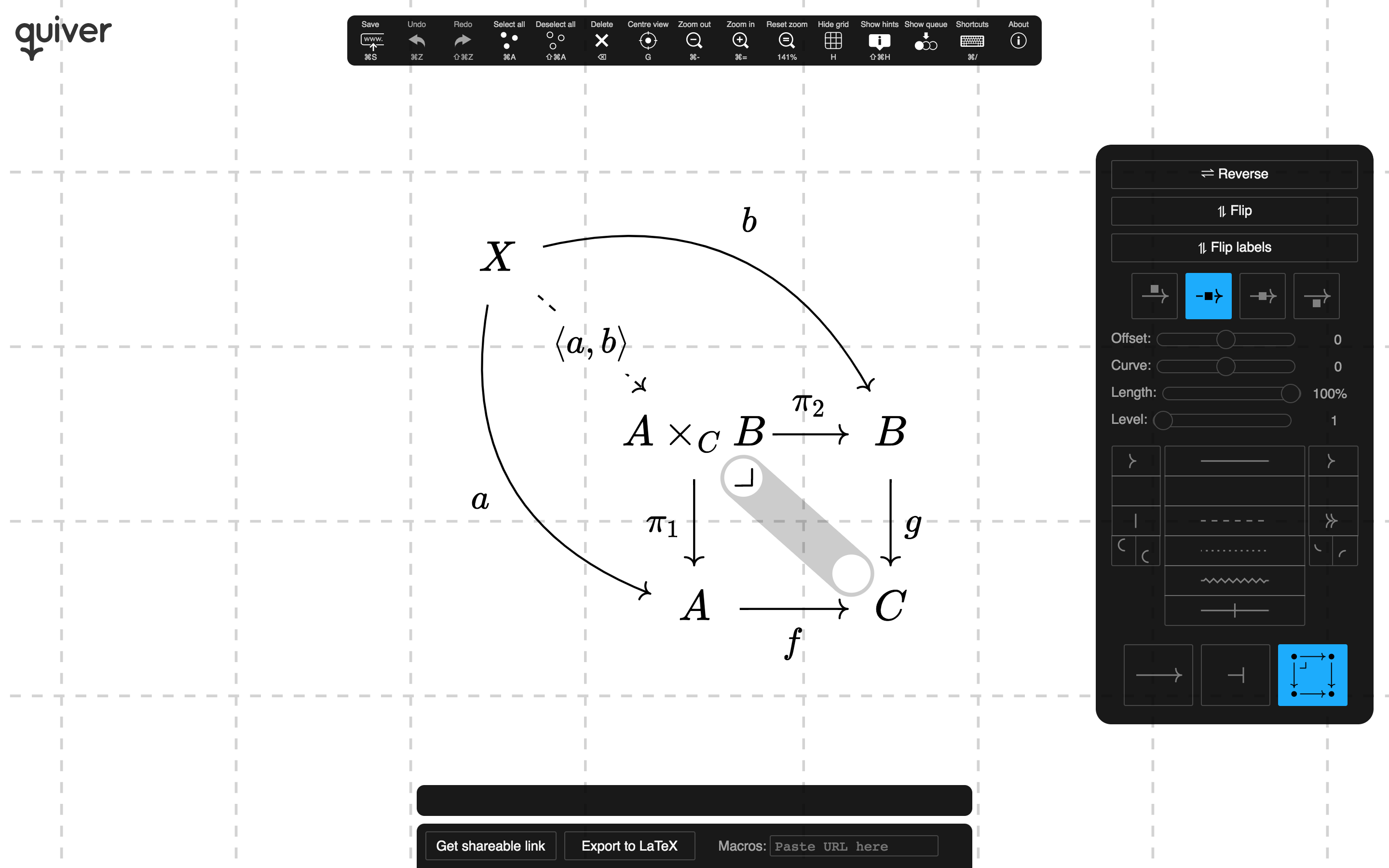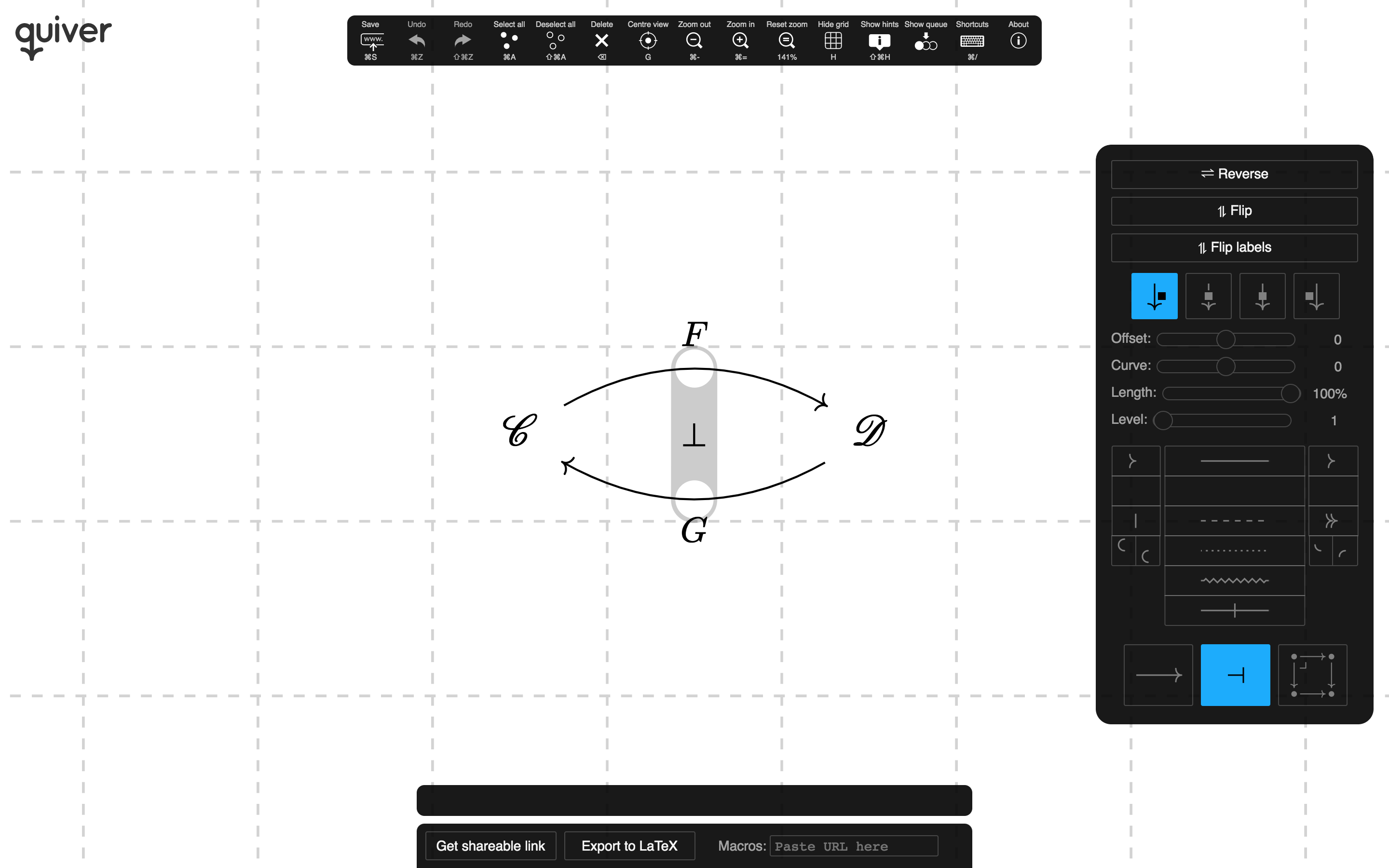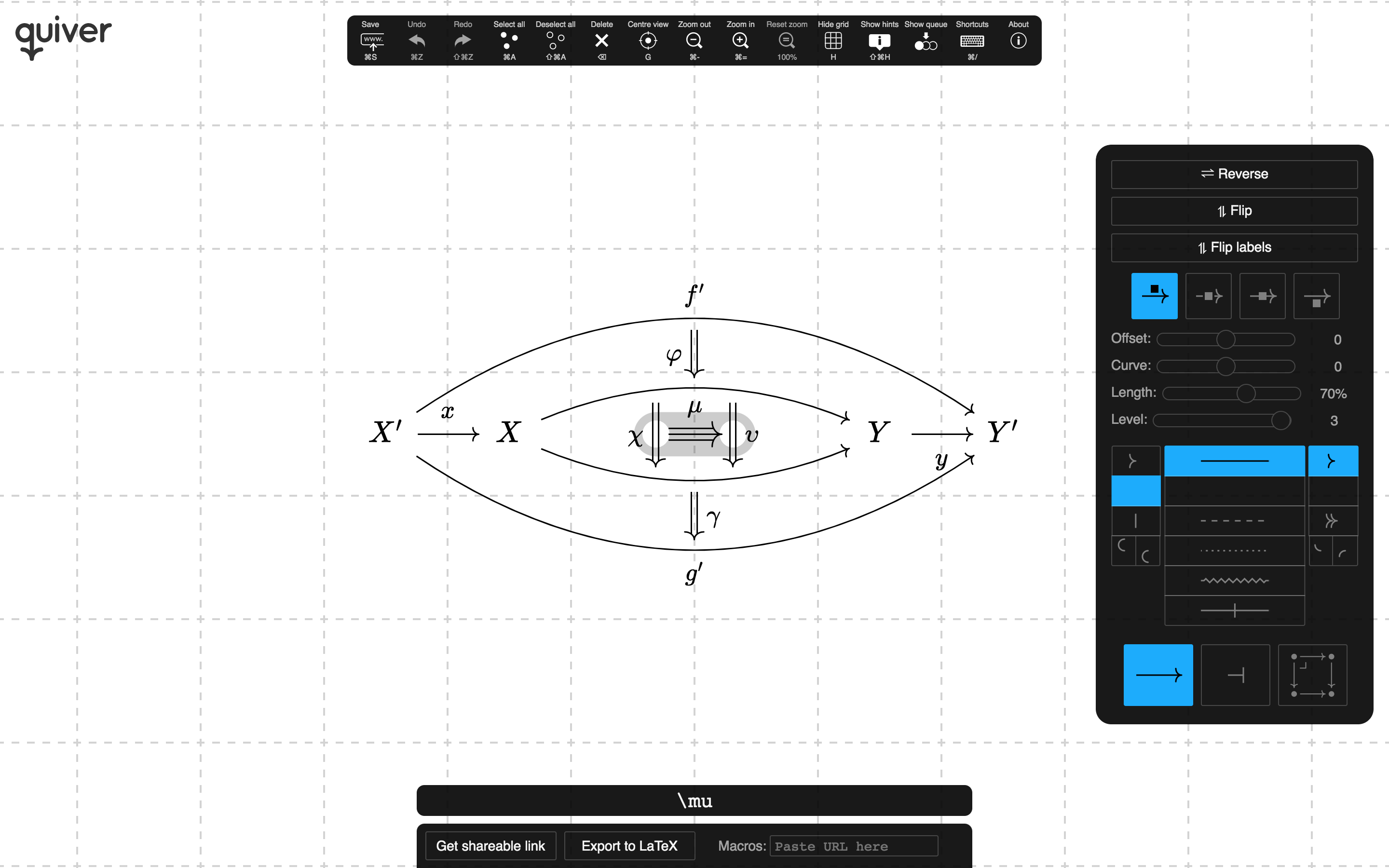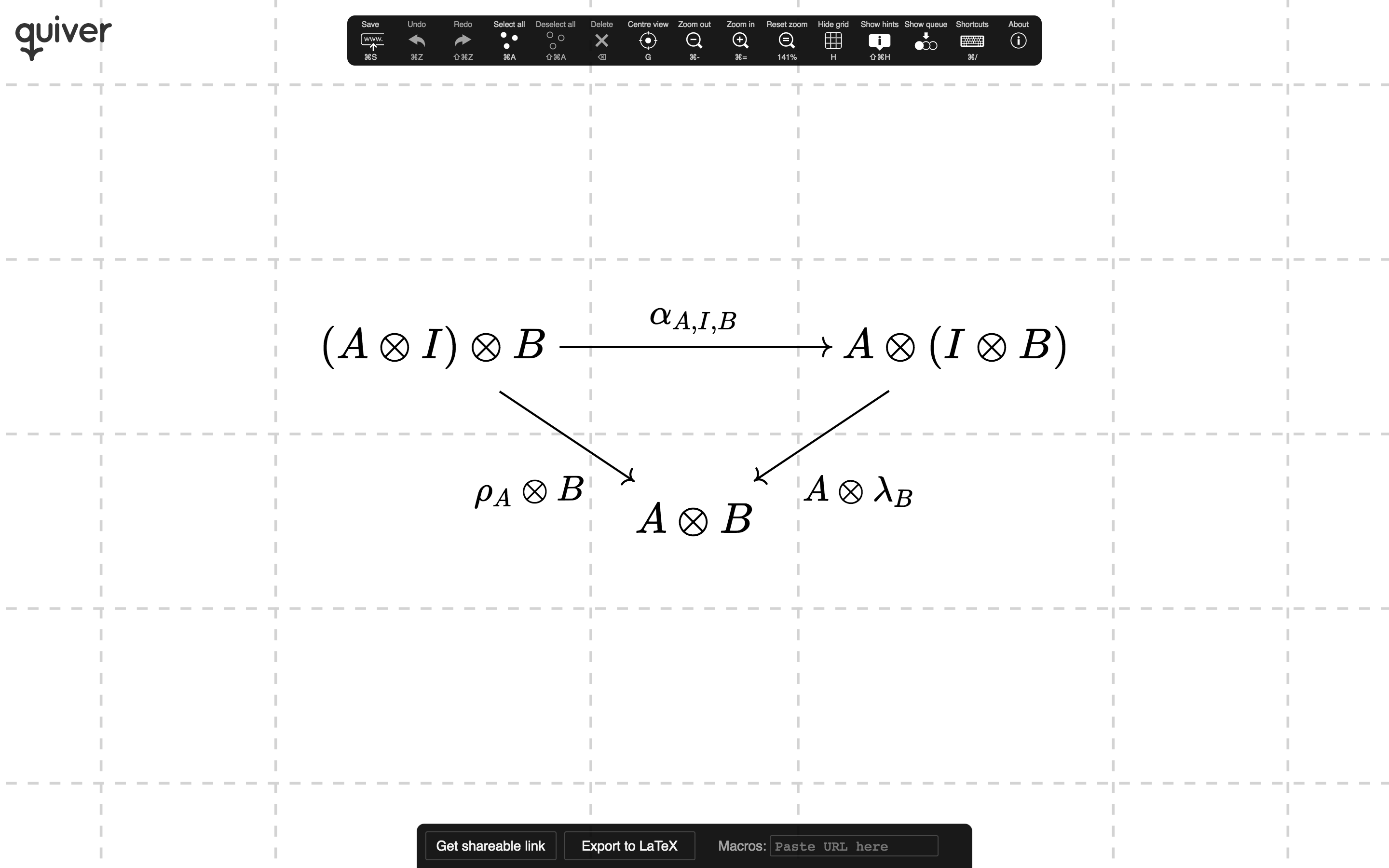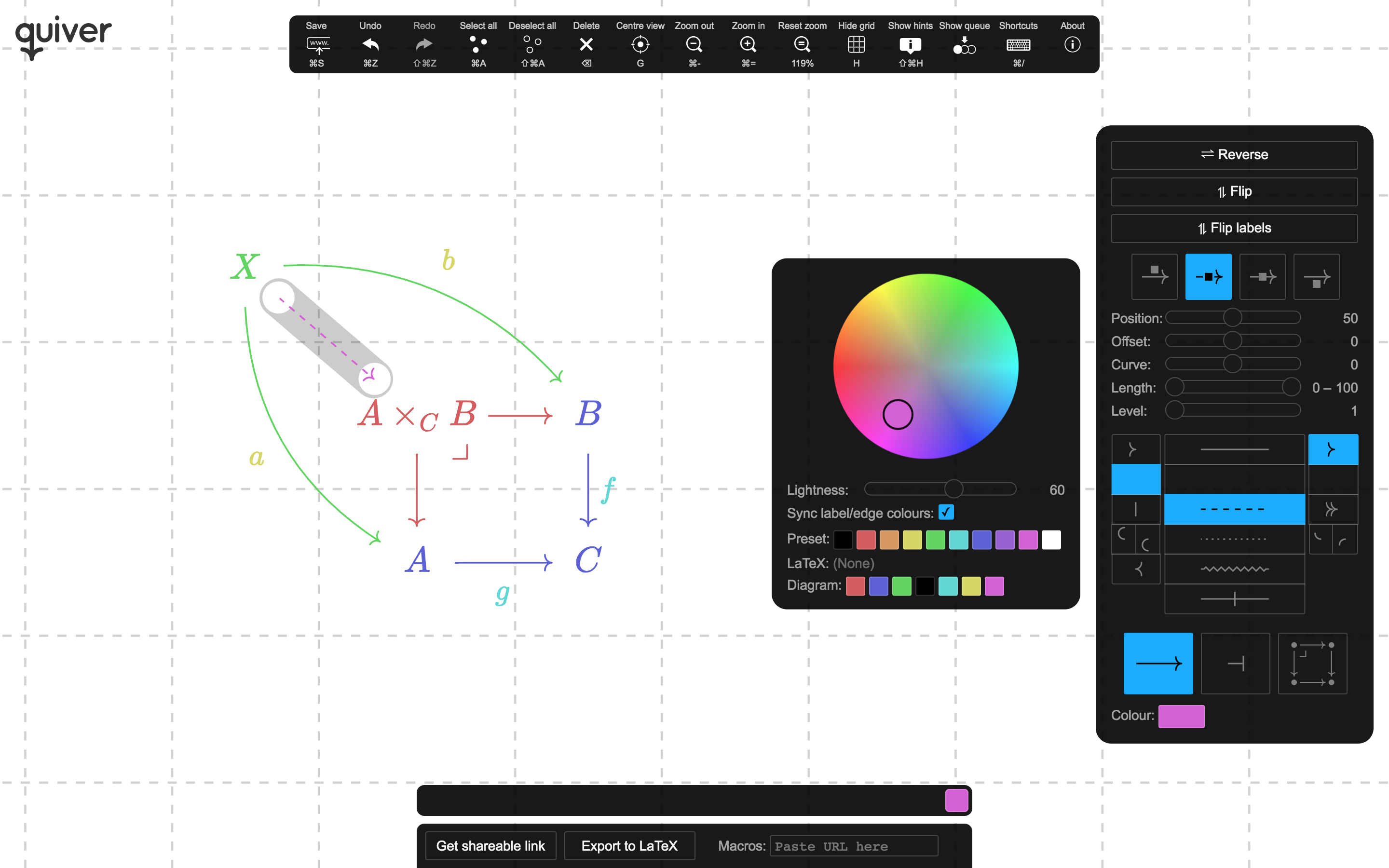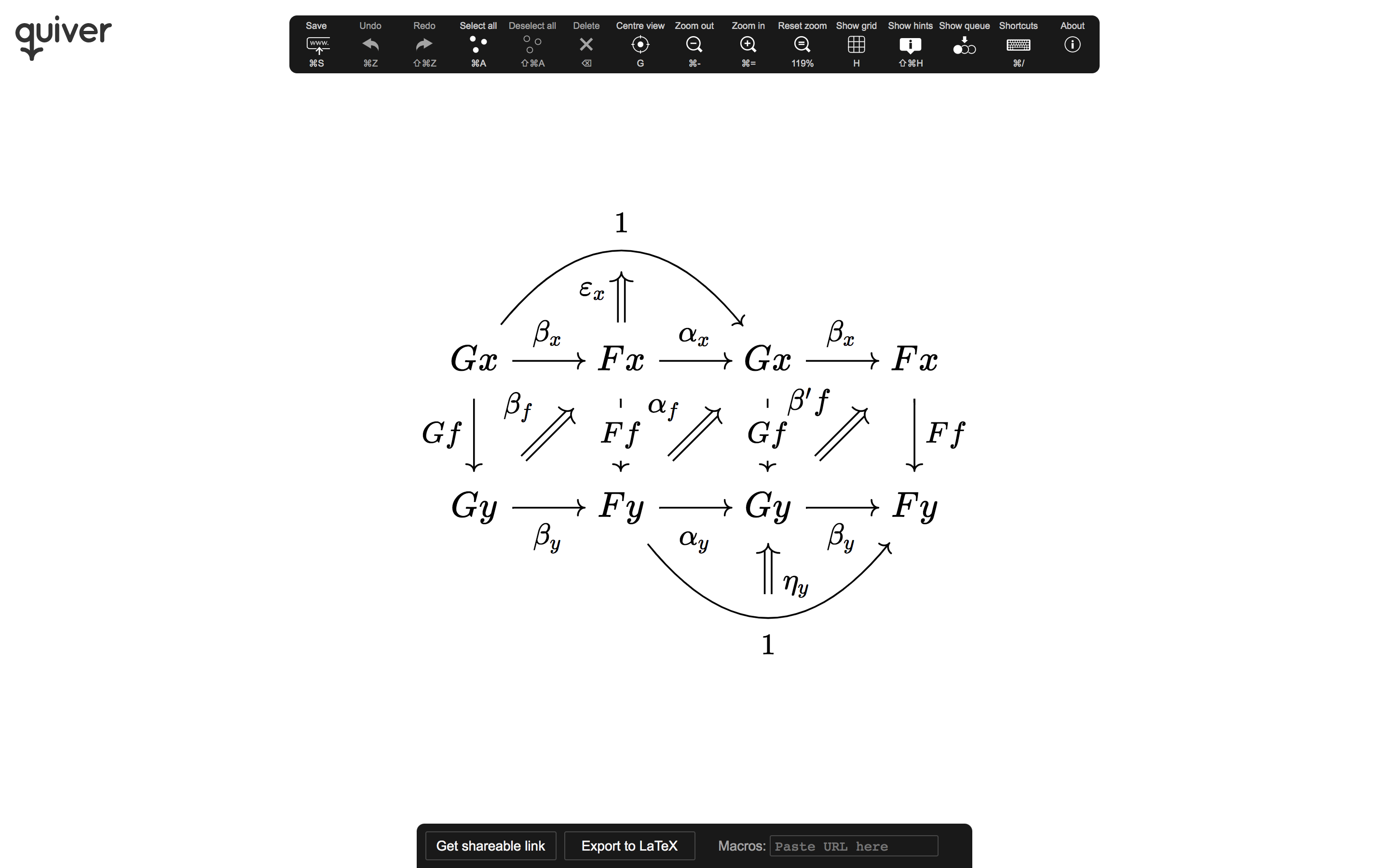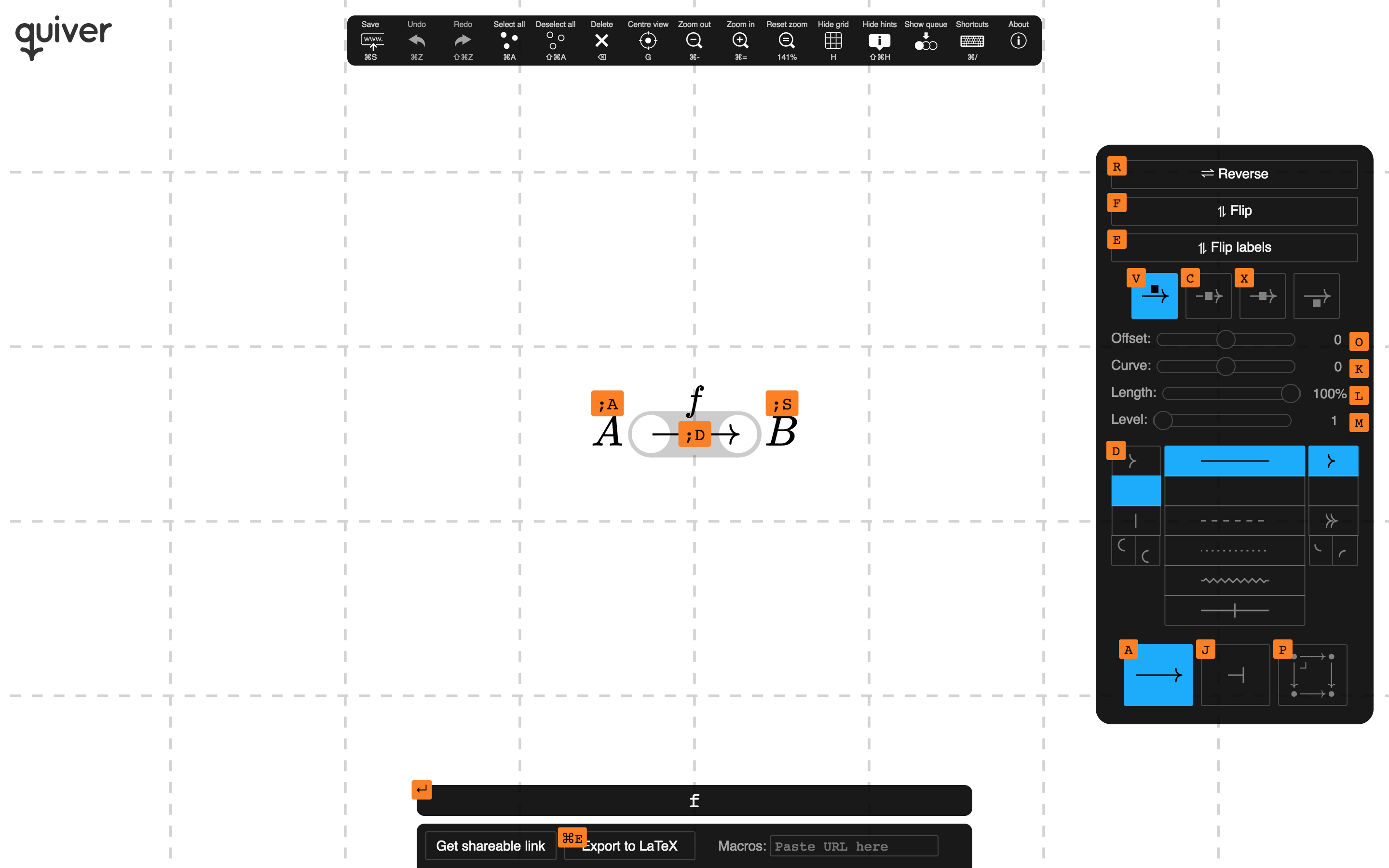quiver is a modern, graphical editor for commutative and pasting diagrams, capable of rendering high-quality diagrams for screen viewing, and exporting to LaTeX via tikz-cd.
Creating and modifying diagrams with quiver is orders of magnitude faster than writing the equivalent LaTeX by hand and, with a little experience, competes with pen-and-paper.
Try quiver out: q.uiver.app
quiver features an efficient, intuitive interface for creating complex commutative diagrams and pasting diagrams. It's easy to draw diagrams involving pullbacks and pushouts,
adjunctions,
and higher cells.
Object placement is based on a flexible grid that resizes according to the size of the labels.
There is a wide range of composable arrow styles.
And full use of colour for labels and arrows.
quiver is intended to look good for screenshots, as well as to export LaTeX that looks as close as possible to the original diagram.
Diagrams may be created and modified using either the mouse, by clicking and dragging, or using the keyboard, with a complete set of keyboard shortcuts for performing any action.
When you export diagrams to LaTeX, quiver will embed a link to the diagram, which will allow you to return to it later if you decide it needs to be modified, or to share it with others.
- Multiple selection, making mass changes easy and fast.
- A history system, allowing you to undo/redo actions.
- Support for custom macro definitions: simply paste a URL corresponding to the file containing your
\newcommands. - Export embeddable diagrams to HTML.
- Panning and zooming, for large diagrams.
- Smart label alignment and edge offset.
To use custom macros and colours in quiver, create a file containing the definitions, like the following.
\newcommand{\cat}{\mathscr}
\newcommand{\psh}{\widehat}
\newcommand{\smcat}{\mathbb}
\newcommand{\yo}{よ}Upload the file to a publicly accessible URL (for instance, gist.github.com), and paste the URL for the raw text into the "Macros" input at the bottom of quiver.
Currently, macros may be defined using \newcommand, \newcommand*, \renewcommand,
\renewcommand*, \DeclareMathOperator, and \DeclareMathOperator*; and colours may be defined
using \definecolor (using the colour modes: rgb, RGB, HTML, gray).
See Editor integration on the quiver wiki.
Run make from the command line, and then open src/index.html in your favourite web browser.
If this fails, you might be using an incompatible version of Make or Bash. In this case, you can
manually download the latest release of KaTeX and place
it under src/ as src/KaTeX/. Then open src/index.html in your favourite web browser. If KaTeX
has not been given the correct path, you will get an error telling you that KaTeX failed to load.
If you have any other problems building quiver, open an issue detailing the problem and I'll try to help.
- S. C. Steenkamp, for helpful discussions regarding the aesthetic rendering of arrows.
- AndréC, for the custom TikZ style for curves of a fixed height.
- Nathan Corbyn, for adding the ability to export embeddable diagrams to HTML.
- Paolo Brasolin, for adding offline support.
- Carl Davidson, for discussing and prototyping loop rendering.
- Everyone who has improved quiver by reporting issues or suggesting improvements.

